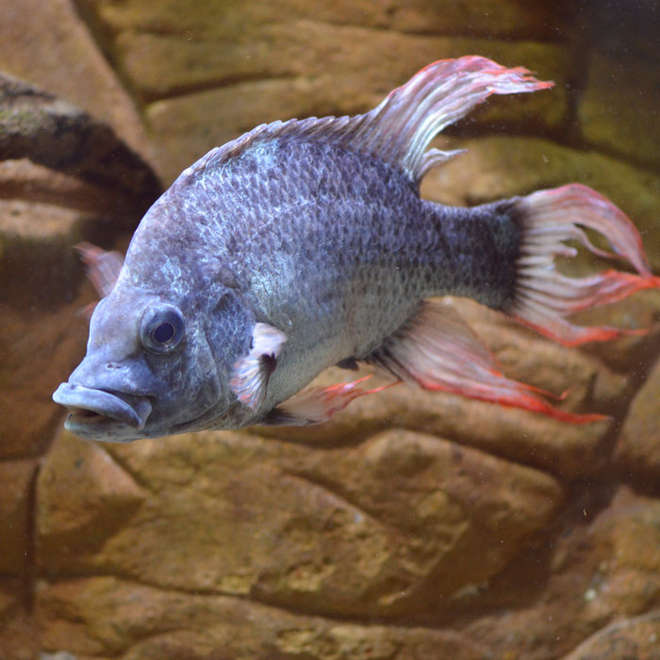





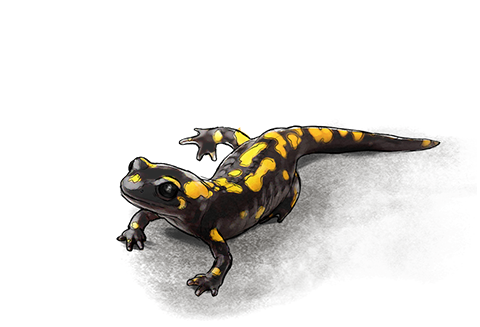





Spain, Sierra de Gredos, 2000 meters above sea level. A barren mountain landscape, stark granite boulders, patches of grass, lakes. This isn’t a typical fire salamander habitat. In most of Europe, these amphibians live in forests. Nevertheless, the fire salamander has managed to adapt to these harsh mountain conditions. This adaptation has made the salamander into something very special – its own subspecies: the Almanzor fire salamander.
Fire Salamander Subspecies


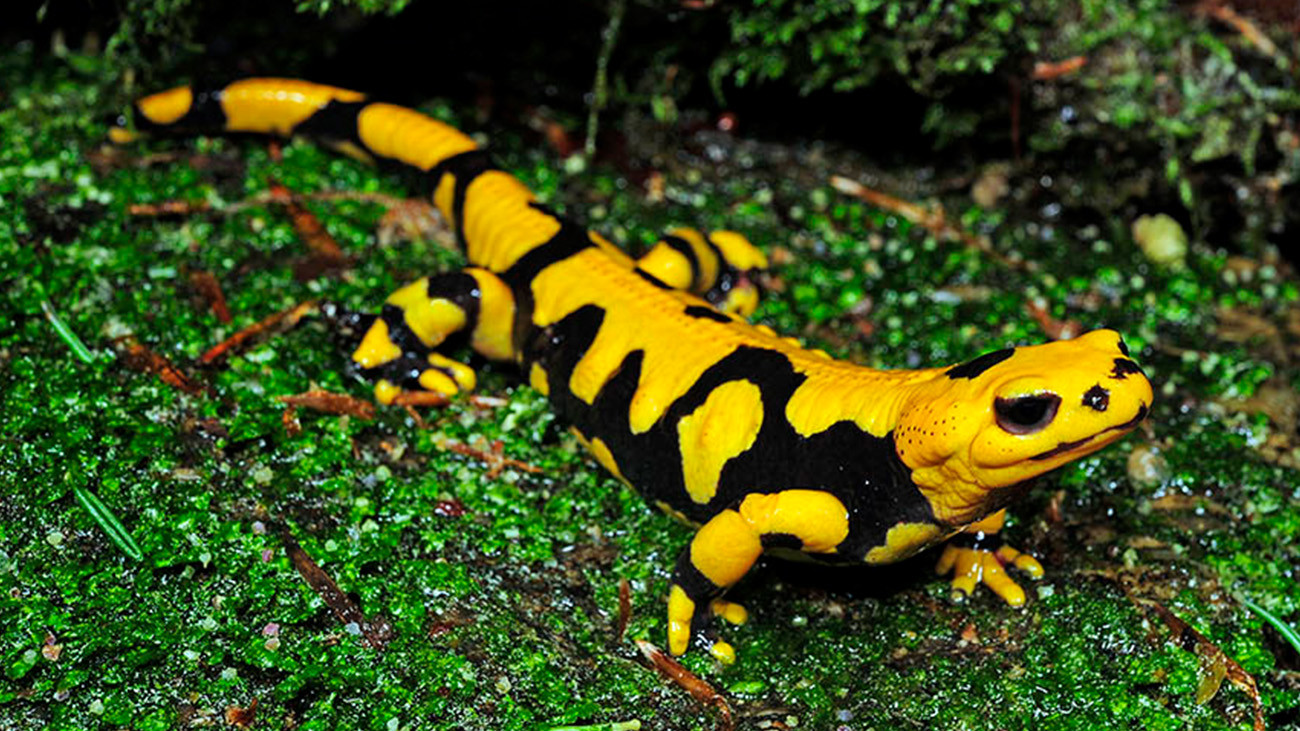
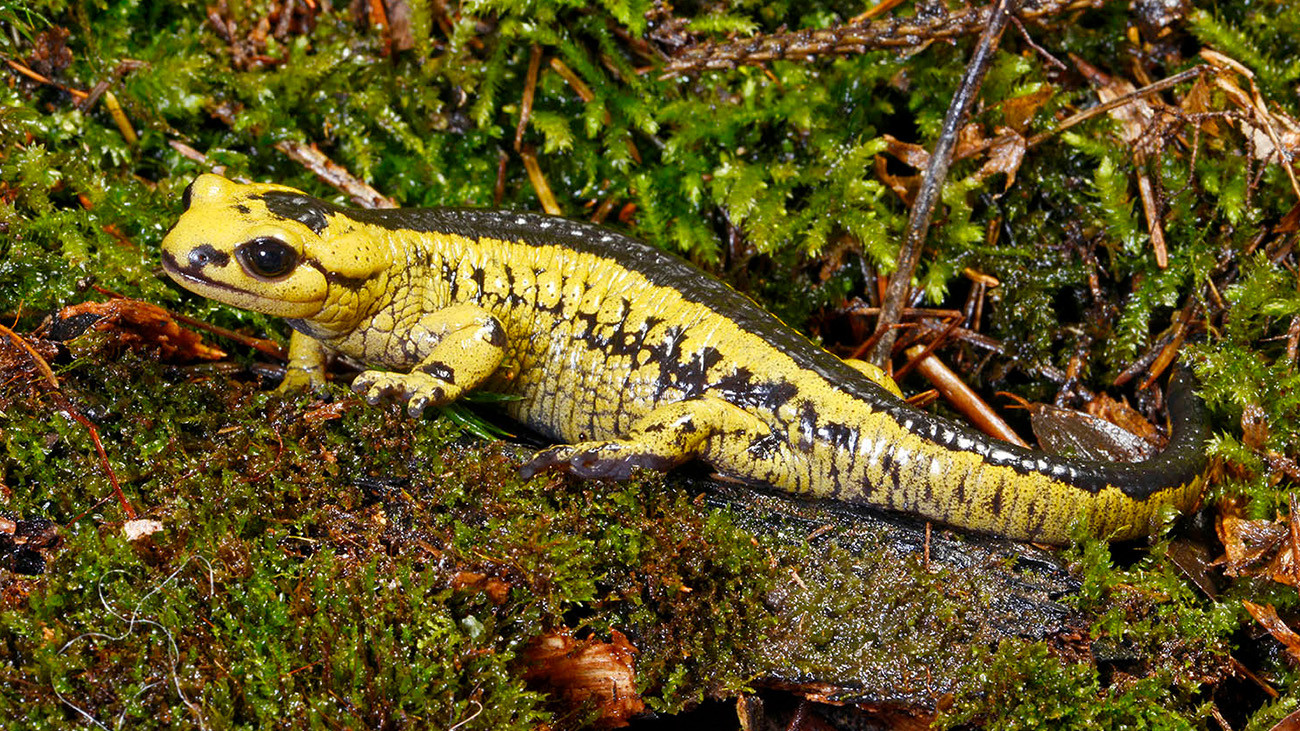
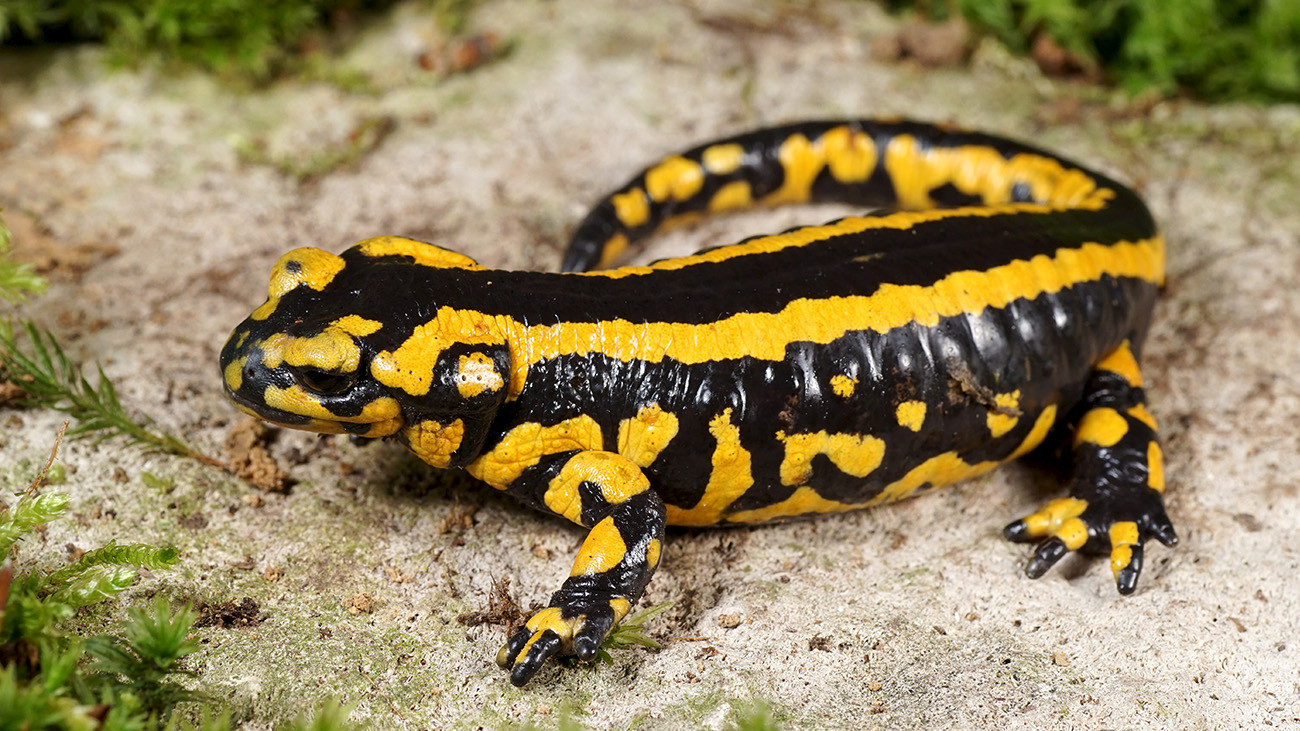
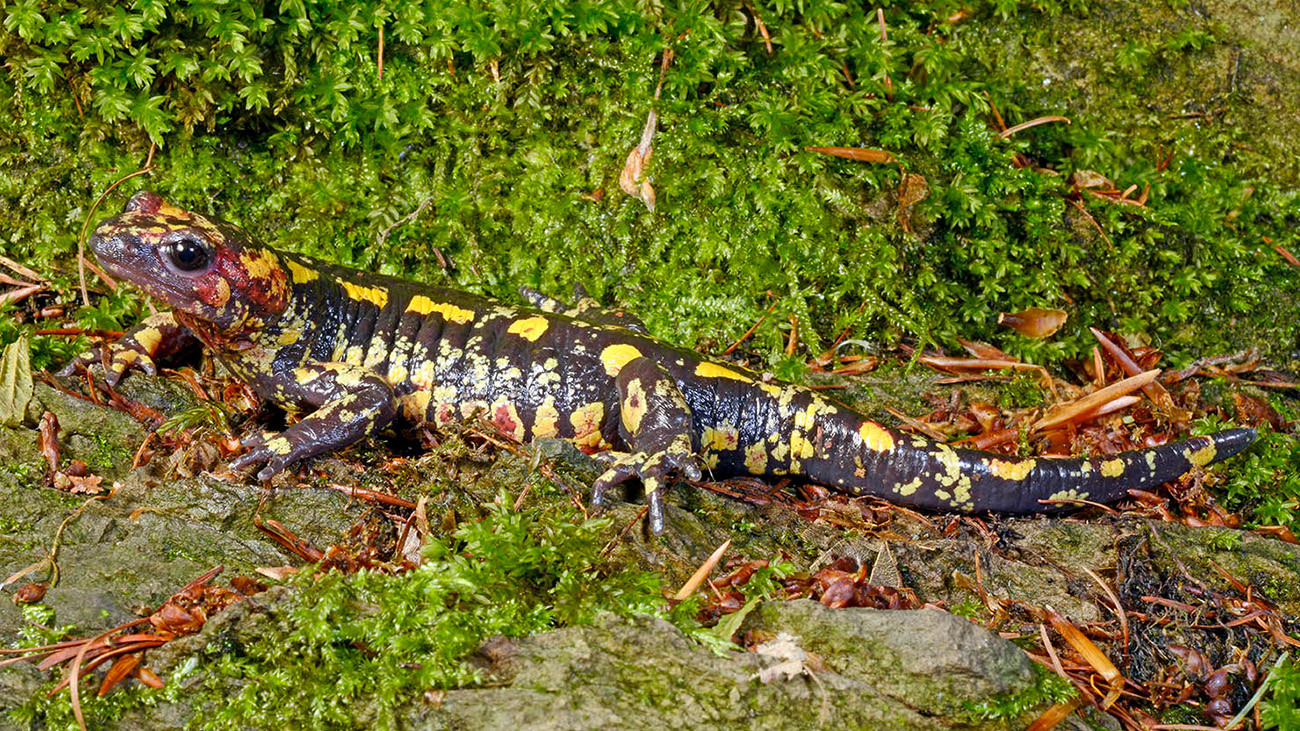
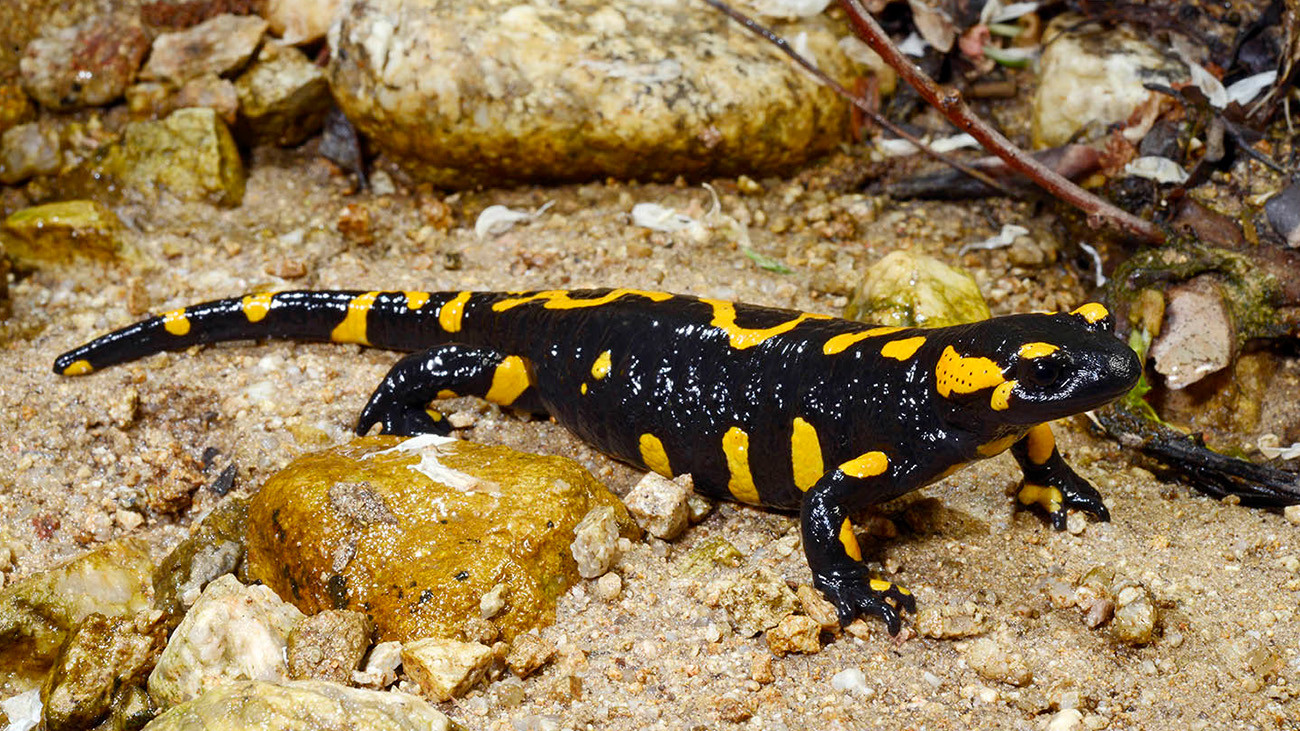
Fire Salamander Subspecies

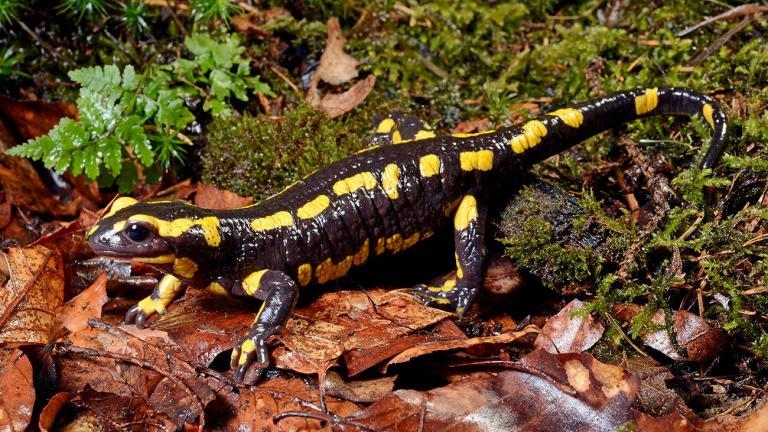



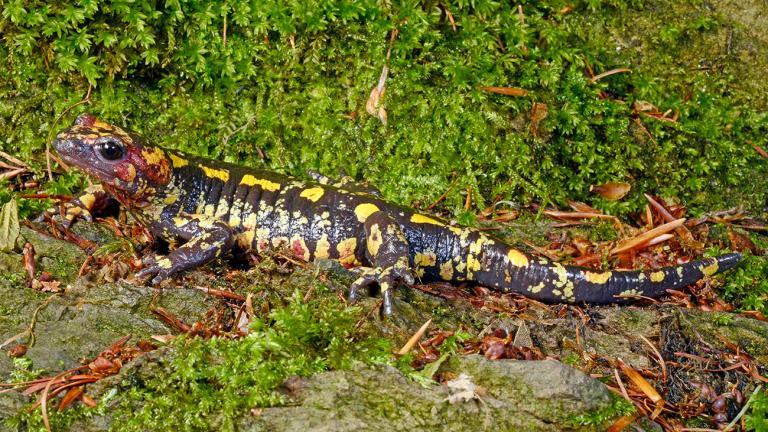
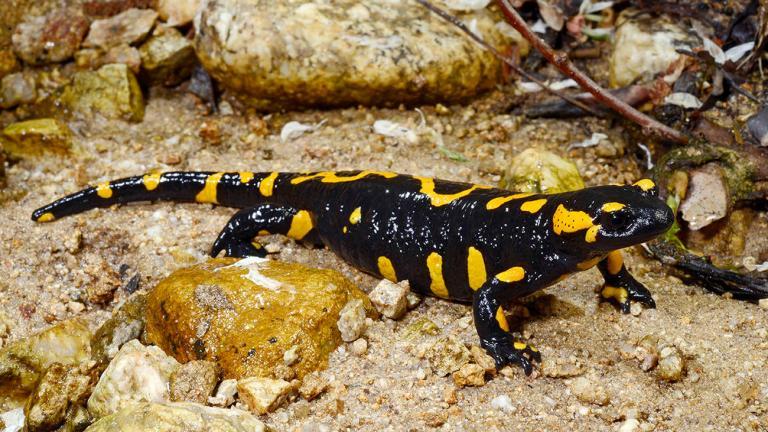
An amphibian makes it to the top
The Almanzor Fire Salamander lives only in the mountain ranges of the Sierra de Gredos, the neighboring Sierra de Guadarrama, and Sierra de San Vincente, which lie to the west and north of the capital Madrid. With a length of about 13 centimeters, the animals are among the smaller fire salamanders. They also have the typical yellow and black warning colors that signal to predators: “Do not eat me – I’m poisonous!” However, their yellow spots are far less prominent than those of other salamanders. This might be an adaptation to the high altitude: more black means more solar energy can be absorbed.
The fire salamanders’ whole way of life is characterized by their cool environment. No other fire salamanders live so far up. The winters here are long: only in May or even June do the salamanders reappear from hibernation. They then don’t have much time to do what fire salamanders do: eat snails and worms, find a partner, and reproduce. The frost already returns in November.
Habitat of the Almanzor Fire Salamander
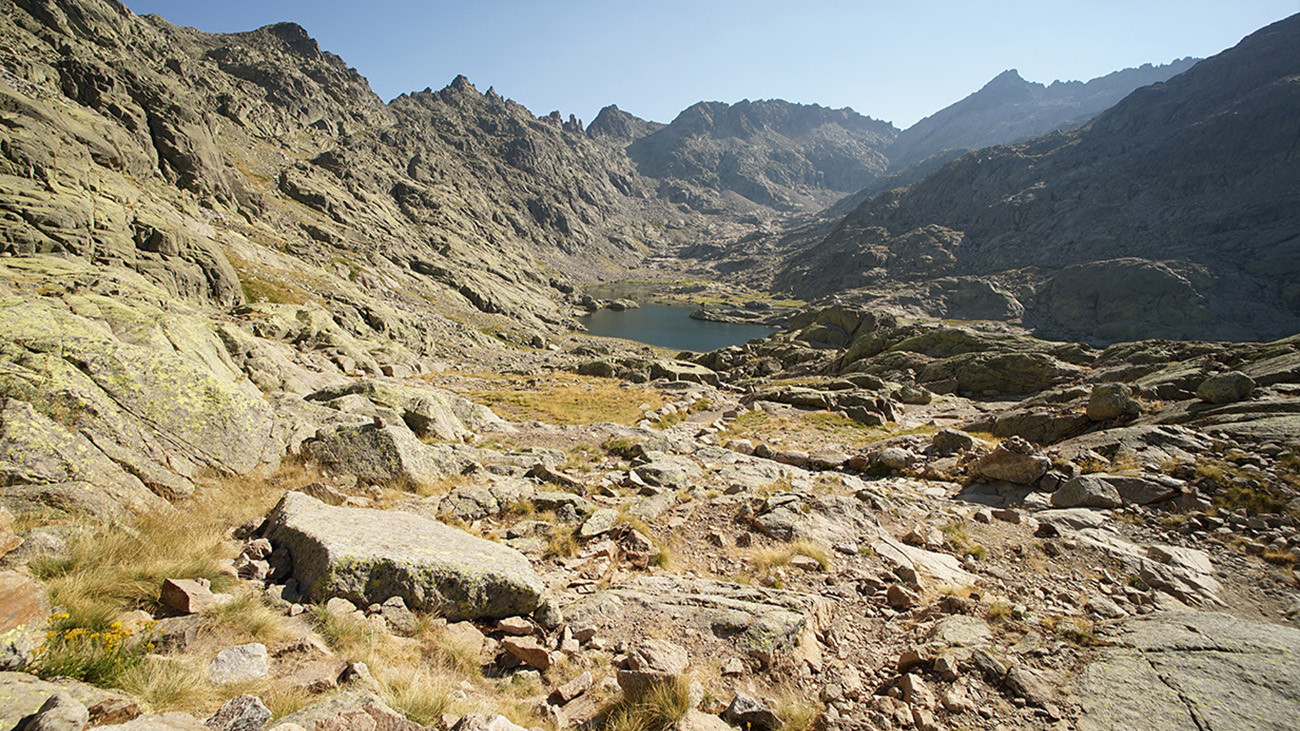

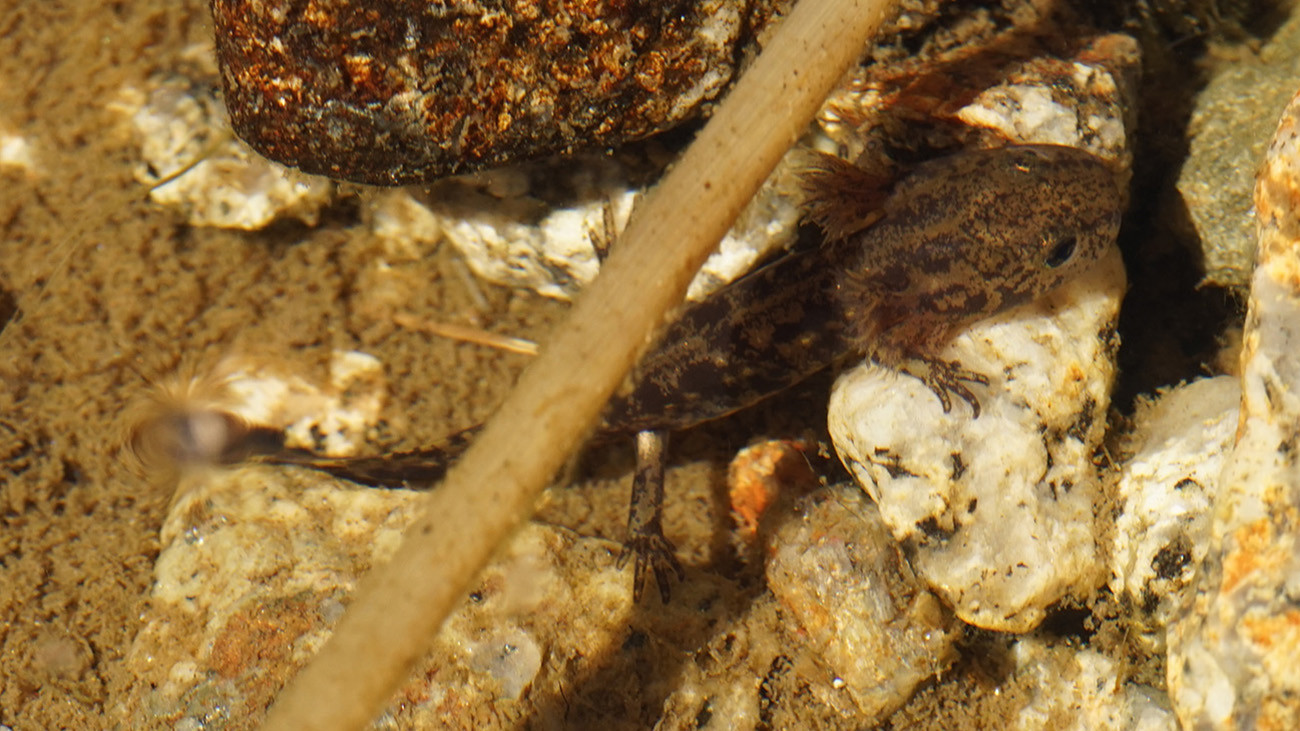

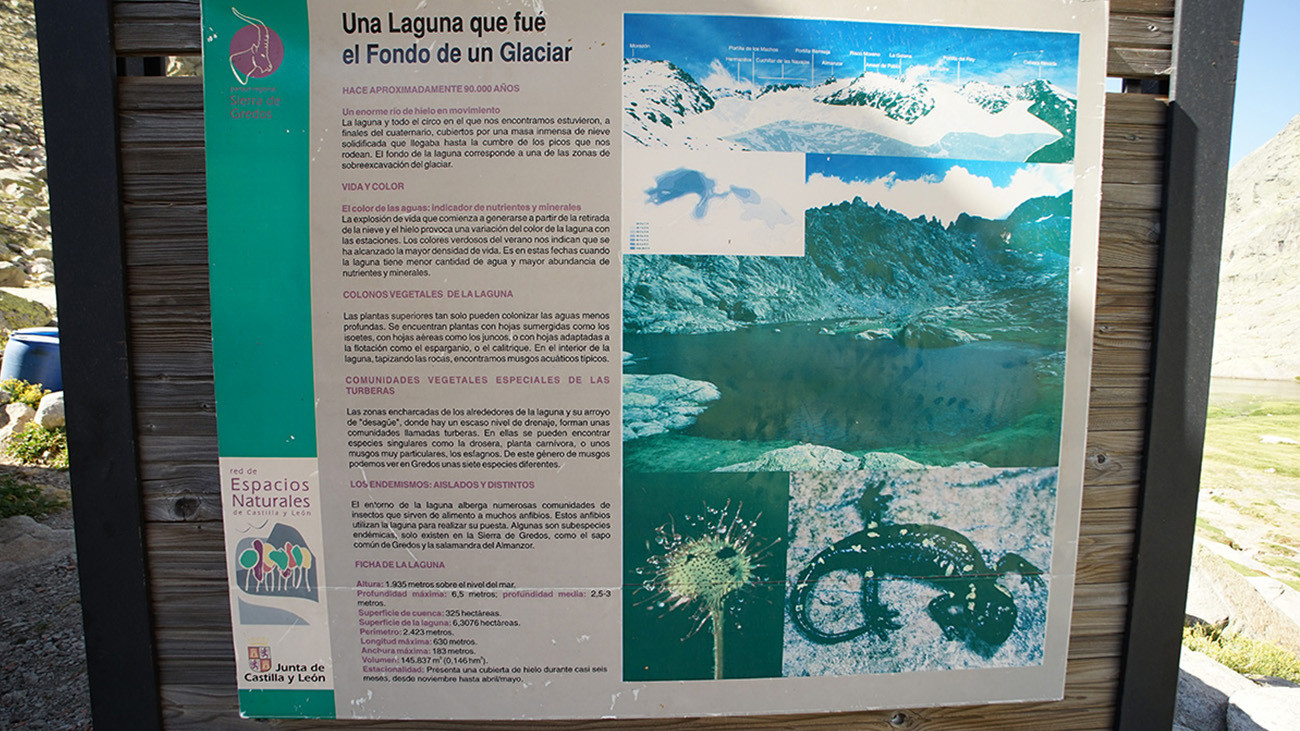
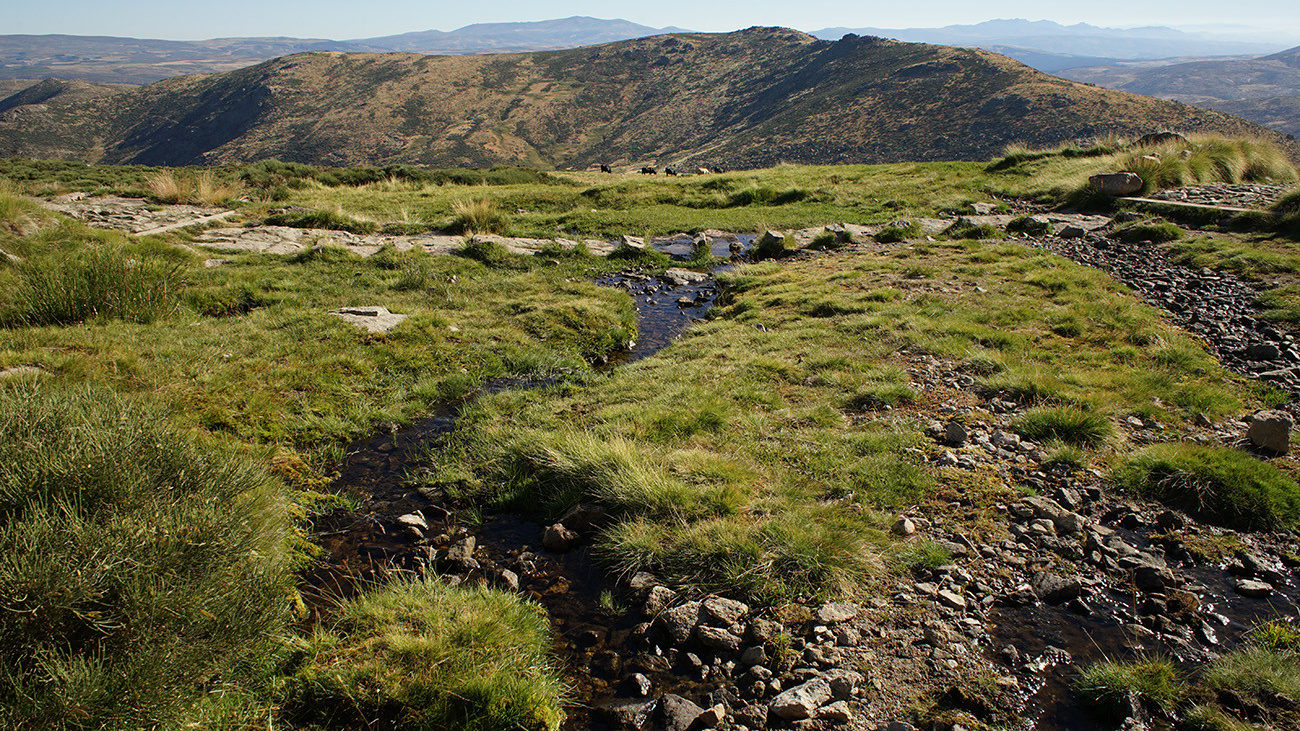
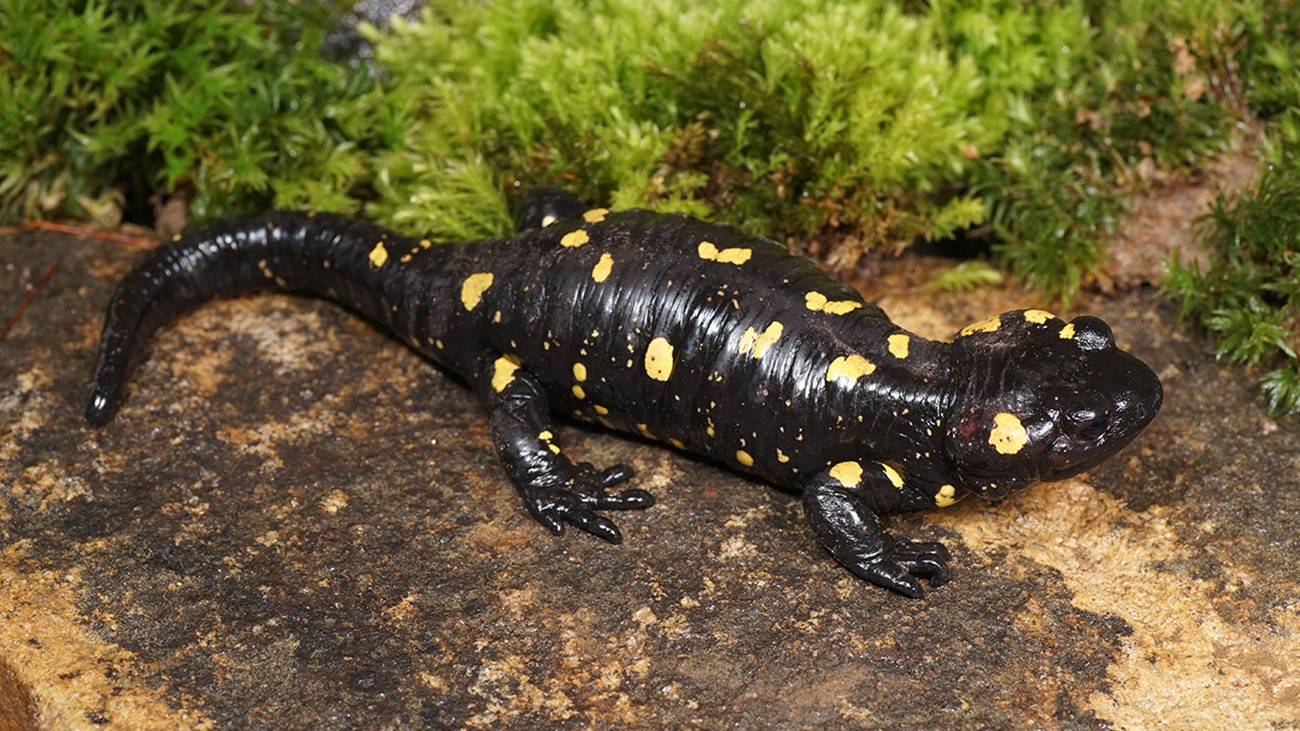
The unique birth of the larvae
Fire salamanders are the only salamanders that give birth to live larvae and directly deposit them in the water. The Almanzor fire salamander’s larvae stay in the water for a particularly long time due to the low temperatures. They usually hibernate there. This explains their uncommonly large size – up to nine centimeters. Unlike other fire salamanders, they already display the typical black and yellow colors while they are still living in the water as large larvae.
The Almanzor fire salamander’s larvae stay in the water for a particularly long time and grow quite large
Fire salamander larvae. | Benny Trapp
Danger lurks in the background
The idyllic landscapes are deceiving: as undisturbed as the Almanzor Fire Salamander’s home looks, free grazing animals are causing the degradation of this habitat. Because of this, and because they only live in such a small area, they are considered threatened according to the Spanish Red List. But another threat lurks in the background: a deadly salamander-killing fungus that was recently discovered in the Netherlands is currently spreading rapidly and can quickly eradicate entire populations. It is terrible to think what would happen if the fungus reached the Spanish mountains …
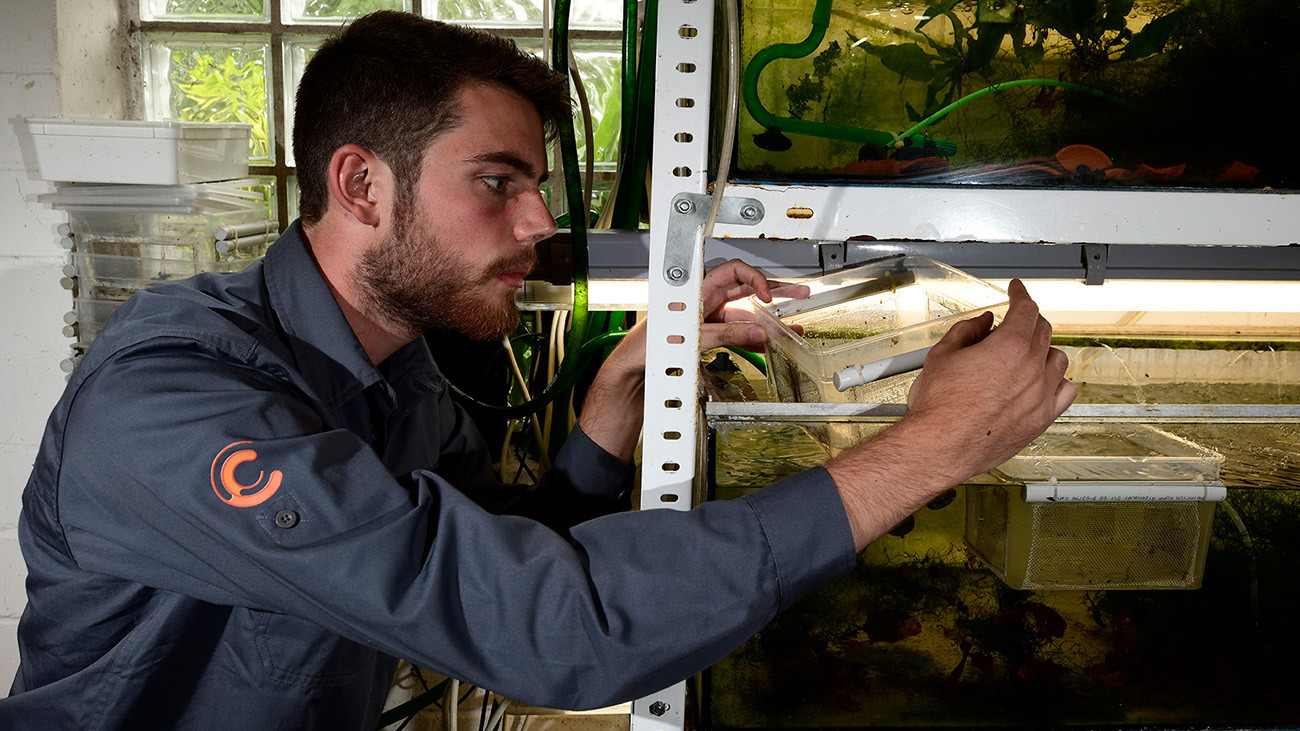
Philip Gerhardt breeding larvae for Citizen Conservation. | Benny Trapp, Frogs & Friends
A Safe Retreat
To ensure that this particular salamander subspecies survives, even if this disaster reaches their homeland, the participants of Citizen Conservation #Amphibians are helping breed stable populations in human captivity. This fire salamander is suitable for amateur breeders because fortunately, it reproduces quickly and can be kept in normal terrarium conditions.
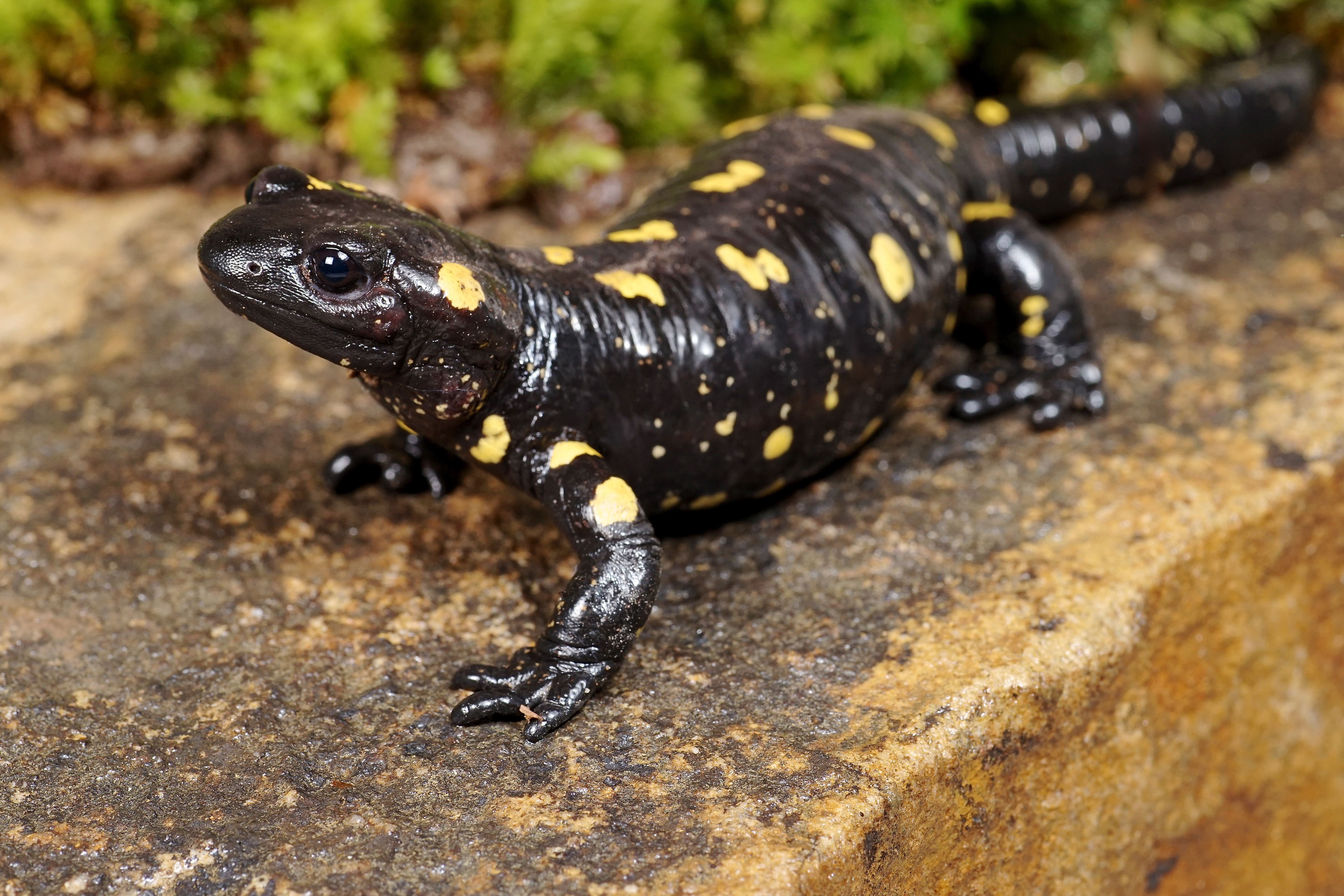
Basic Information on Biology and Breeding
Basic Information on Biology and Breeding
More Species
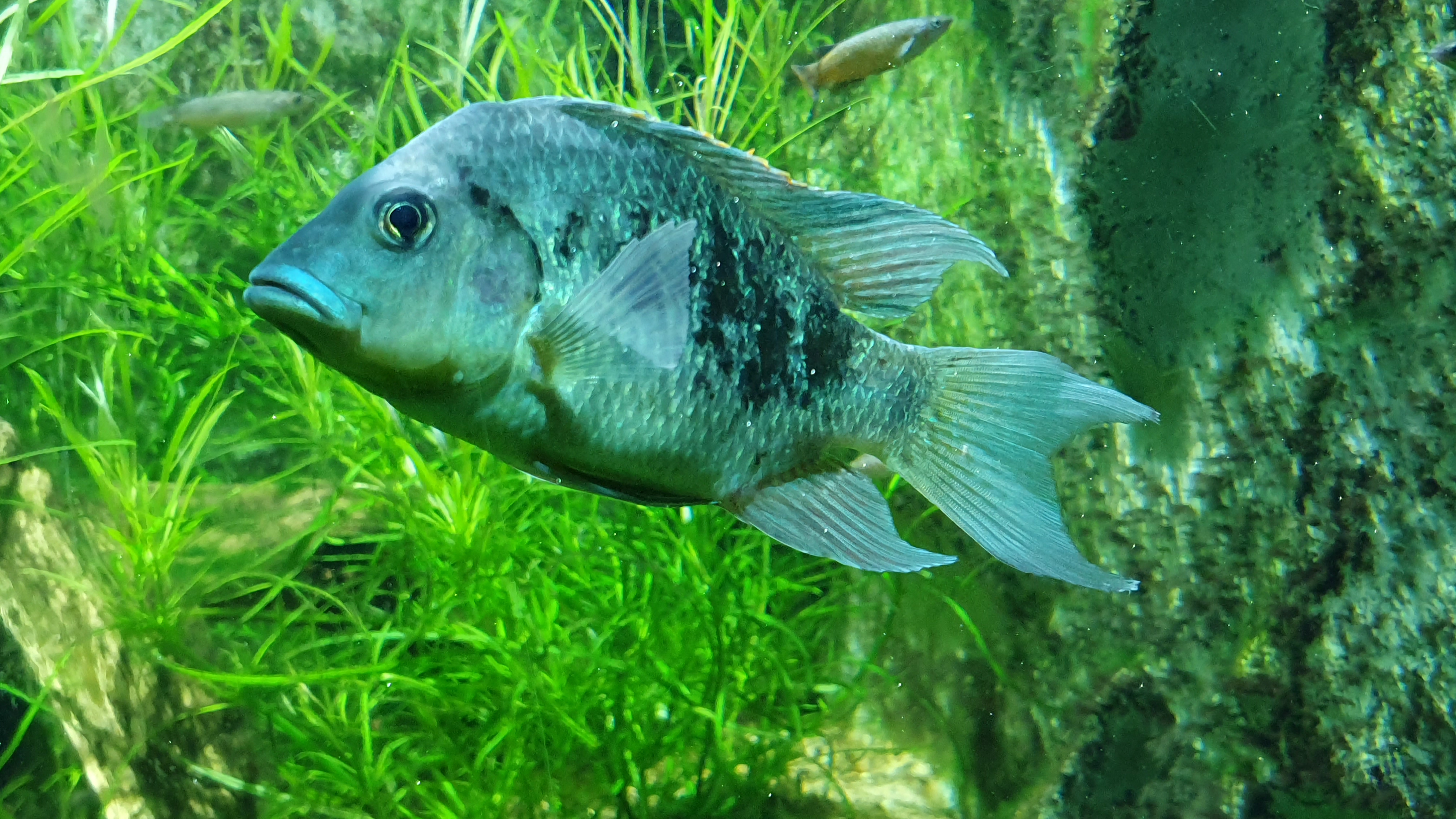
Nosy Be Cichlid
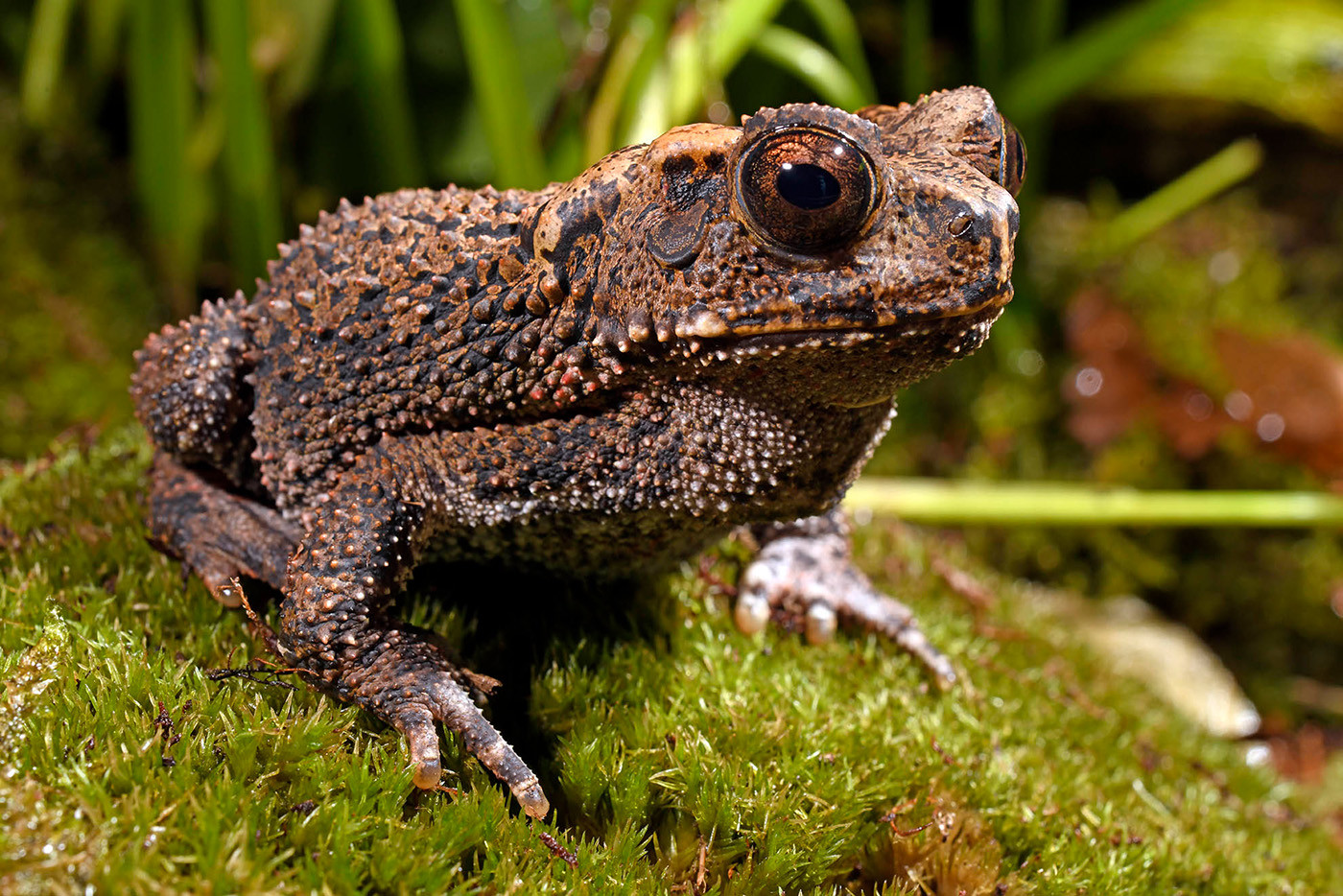
Bony-headed Toad
